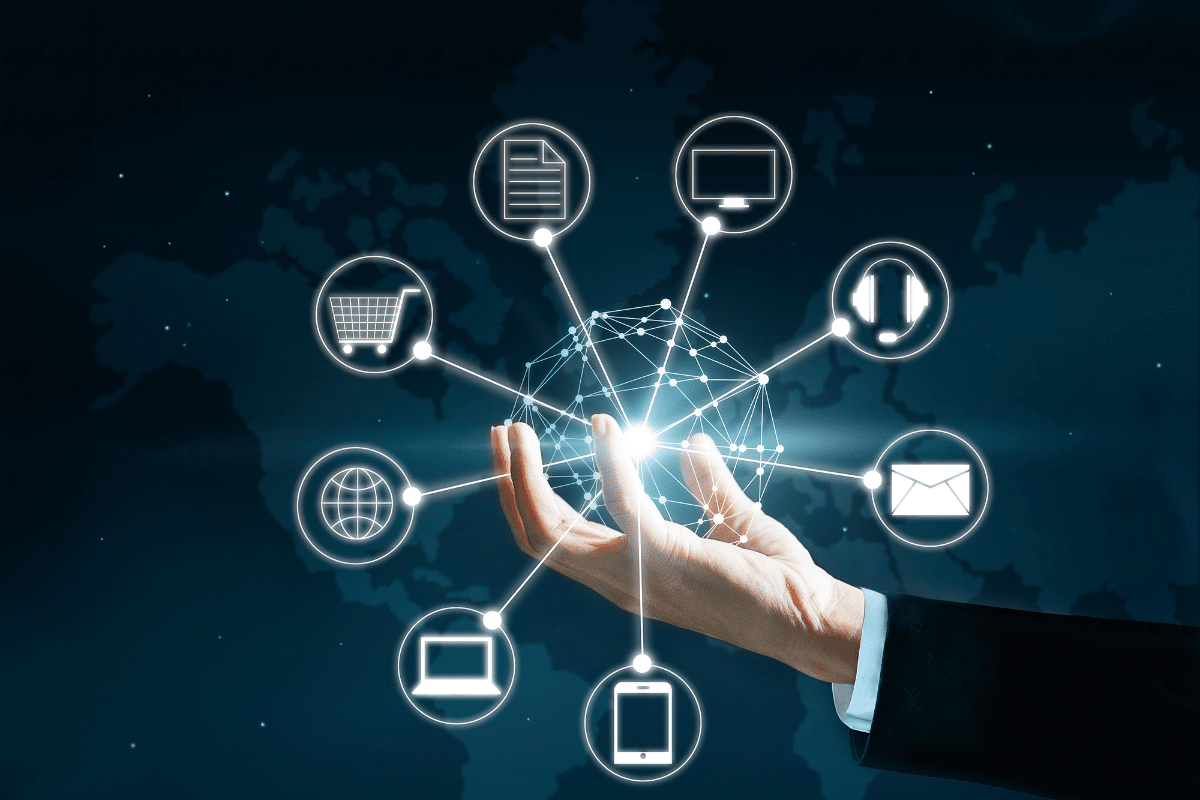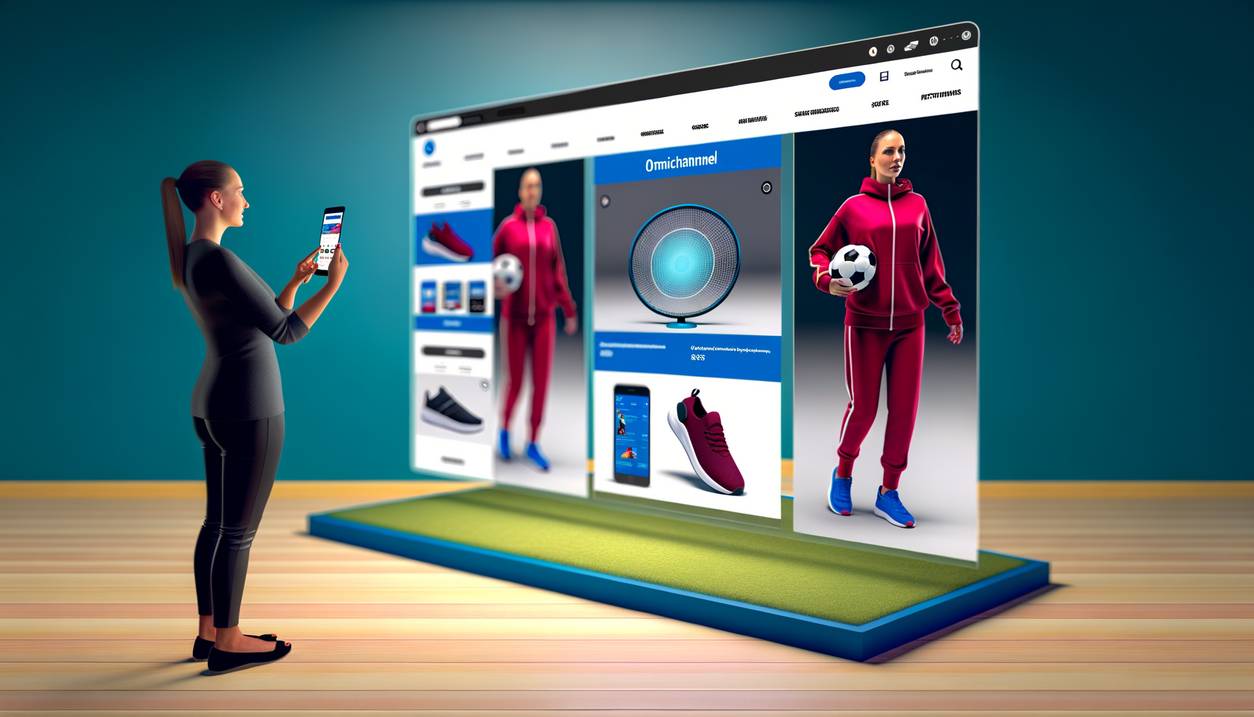Omnichannel 2025: Seamless Customer Journey is a MUST

The omnichannel marketing strategies to enhance digital transformation, drive customer loyalty, and boost revenue with insights from global brands like Nike and Amazon.
How Omnichannel Marketing Transforms Brand Engagement
In today's fast-paced world, where the digital world continually evolves (and fast), businesses face the immense challenge of meeting ever-increasing consumer expectations. We live in an age where customers demand not just products, but experiences, intuitive, seamless, and personalized at every interaction. This is where omnichannel marketing steps in, a revolutionary strategy weaving every channel into a single, cohesive journey.
Omnichannel marketing differs fundamentally from traditional and multichannel approaches by focusing on integration and customer experience. Imagine a scenario where a consumer can start their shopping journey online, continue it through a mobile device while commuting, and finalize their purchase in a physical store without a hitch, the very embodiment of a unified experience. But crafting such a seamless narrative comes with its own set of challenges and victories.
Why Omnichannel Marketing Matters
At its core, omnichannel marketing is about consistency and personalization. By ensuring that every customer touchpoint, be it through an app, an in-store visit, or a customer service call, contributes to a seamless journey, brands build trust and foster deeper relationships. Not only does this enhance the customer experience, but it also facilitates increased retention and loyalty.
Consider the retailer Nike. With their omnichannel approach, they have successfully integrated their website, mobile applications, and physical retail stores into a blended, engaging environment. Their robust mobile apps, such as the Nike App and Nike Training Club, aren't just extensions of their digital ecosystem; they are pivotal components that enhance and elevate the consumer's shopping and fitness experience.

The Key Elements of a Successful Omnichannel Strategy
To truly harness the power of omnichannel marketing, it's crucial to understand and implement several key components:
- Customer Insight: The foundation lays in understanding customer behavior and preferences. Market research, customer feedback, and analytics are indispensable tools in creating a precise customer persona.
- Seamless Integration: Transitioning smoothly between touchpoints enhances the customer experience. Ensuring that all channels, including social media, email, and others, tell a cohesive story is vital.
- Consistent Messaging: While consistency in branding is critical, adapting to local nuances and preferences can enrich the customer journey, creating a market-specific resonance.
- Technology Investment: Implementing the right technology is essential for collecting and analyzing data. Moreover, tools like AI-driven translation services ensure that messages resonate across different languages without losing their essence.
- Continuous Optimization: Regular testing of strategies ensures that brands remain agile and responsive to changing consumer needs. Tools such as A/B testing and analytics provide insights for fine-tuning approaches.
Lessons from Leading Brands
Take a cue from industry leaders like Sephora and Starbucks. Sephora’s omnichannel strategy is a textbook example of personalized customer engagement. Their mobile app not only allows users to try products virtually, but it also utilizes location data to drive in-store visits. Their omnichannel strategy effectively combines digital capabilities with physical store elements, allowing for a comprehensive beauty resource.

Similarly, Starbucks has redefined convenience and loyalty through its app, which serves as both a platform for contactless transactions and a loyalty hub. By allowing users to seamlessly toggle between in-app and in-store experiences, Starbucks maximizes customer satisfaction while cultivating a loyal user base.
“The key to successful omnichannel marketing lies in the ability to understand and cater to your consumers seamlessly across the diverse landscape they traverse.”
Amazon, with its digital prowess, ensures that customers receive a frictionless experience across various platforms. Whether through one-click purchases online, voice orders via Alexa, or in-person shopping at Amazon Go stores, the customer journey remains uninterrupted and satisfying.
The Future of Omnichannel Marketing and what the next 5 years might look like, in my humble opinion
1. Discovery shifts from SEO to “AIO.”
Search is turning conversational and multimodal. When shoppers ask ChatGPT, Perplexity, or Google’s SGE for a running shoe recommendation, the AI pulls data from product feeds, images, and reviews, not just keywords. Your site code, structured data, and visuals must be ready for large-language-model crawlers or you’ll vanish from the shortlist. Brands already rebuilding their PDPs for “AI Optimization” are seeing higher placements in generative answers. Ignore AIO and your organic traffic will erode fast.
2. Hyper-personalization becomes the default.
Three out of four shoppers now jump between at least three channels before buying, and those customers deliver a 30 % higher lifetime value than single-channel shoppers.
By 2027, real-time CDPs will stitch together zero-party data, RFID store signals, and model-generated intent to serve offers that feel almost psychic. The upside is loyalty; the downside is creepy factor. You’ll need clear value exchanges (“share your goals, get a custom plan”) and iron-clad consent flows or risk regulatory blowback.
3. Immersive interfaces cut returns and drive confidence.
AR try-ons, 3-D room planners, and spatial commerce pop-ups are no longer gimmicks. McKinsey estimates AI-powered AR/VR can reduce product returns by up to 20 %.
Early movers like IKEA, Nike, and Sephora are embedding these tools directly in their apps so the jump from virtual to cart feels natural. For B2B, expect “industrial AR demos” that let buyers inspect machinery in their own factory layout before signing. The technology cost keeps falling; the experience gap keeps widening.
4. Unified commerce is the new baseline, yet only 5 % of retailers have it.
A Forrester benchmark shows that just one in twenty retailers can expose a single inventory pool, prices, and promotions everywhere in real time.
That gap is your chance: integrate order management, POS, and e-commerce now, and you’ll deliver “buy anywhere, service anywhere, return anywhere” while competitors are still reconciling spreadsheets. The hard part isn’t tech; it’s tearing down channel P&Ls and harmonizing KPIs so stores celebrate, rather than fear, online sales.
5. Fulfilment goes micro and autonomous.
Same-day is table stakes; one-hour is next. Expect dark stores, sidewalk bots, and drone corridors connected to your OMS. AI-driven allocation tools already cut out-of-stocks by half for retailers piloting them.
Consequence: logistics moves from back-office cost center to front-of-house brand theatre. Your fastest touchpoint may soon be a locker in a gym or a fridge in an apartment lobby.
6. Proactive service replaces reactive support.
More than 85 % of consumers now expect companies to solve issues before they complain.
Voice bots, WhatsApp flows, and predictive service dashboards will ping customers about shipment delays or suggest size exchanges before a return. Do it well and you boost retention; do it poorly and every proactive ping feels like spam.
7. Data privacy tightens, but smart brands still win insight.
Cookie deprecation, the EU Data Act, and stricter opt-in rules will starve lazy remarketing. Winning teams are shifting to loyalty programs, social log-ins, and value-driven surveys to earn first-party data. The payoff is richer profiles that feed your personalization engine without legal headaches.
8. Composable tech stacks.
Headless commerce, API gateways, and low-code orchestration let marketers test a TikTok mini-store this week, a metaverse pop-up next, then rip out anything that drags. The trade-off is governance: without strong architecture principles you’ll breed integration spaghetti. Keep a “sunset” budget line so experiments don’t become legacy.
9. Talent and culture decide the winners.
Tech is easy to buy; alignment is hard to build. The future omnichannel org looks like a newsroom: data scientists, merchandisers, UX designers, and store managers co-create campaigns in sprint rooms. Leaders who incentivize shared outcomes (lifetime value, NPS, return rate) beat those who cling to channel quotas.
10. Next steps: move now while barriers are still high.
- Audit discoverability: add llms.txt, structured data, and rich visuals so AI agents can crawl you.
- Consolidate data: feed a single CDP; kill duplicate IDs.
- Prototype AR/VR: start with high-return categories like footwear or furniture.
- Align incentives: pay stores for e-commerce assists; bonus support teams on proactive saves.
- Measure what matters: track customer effort and share of wallet, not just conversions.
- The bottom line: omnichannel is evolving from “everywhere you shop” to “everything works together, invisibly.”
Brands that invest today will own the default buy button tomorrow; those that wait will spend the next decade playing catch-up!
more Insights

Legacy Systems: The barrier to your digital transformation
Retail & e-Commerce
October 8, 2025

Digital Leadership Skills for Real Transformation
People & Leadership
July 26, 2025

OpenAI launches Study Mode to all users
Technology
October 8, 2025

Why Low Code Matters for Transformation
Technology
July 23, 2025
exclusive platform
AI Omni Agent
Coming soon
Currently in beta. Soon available to all SMEs looking to 10x their output. Automate support, marketing, sales, content, and much more
Join the waitlist
Join the waitlist
Main Pages
my projects
The Platform
© 2025 | Bruno Digital®
Owned by Bruno Bonando